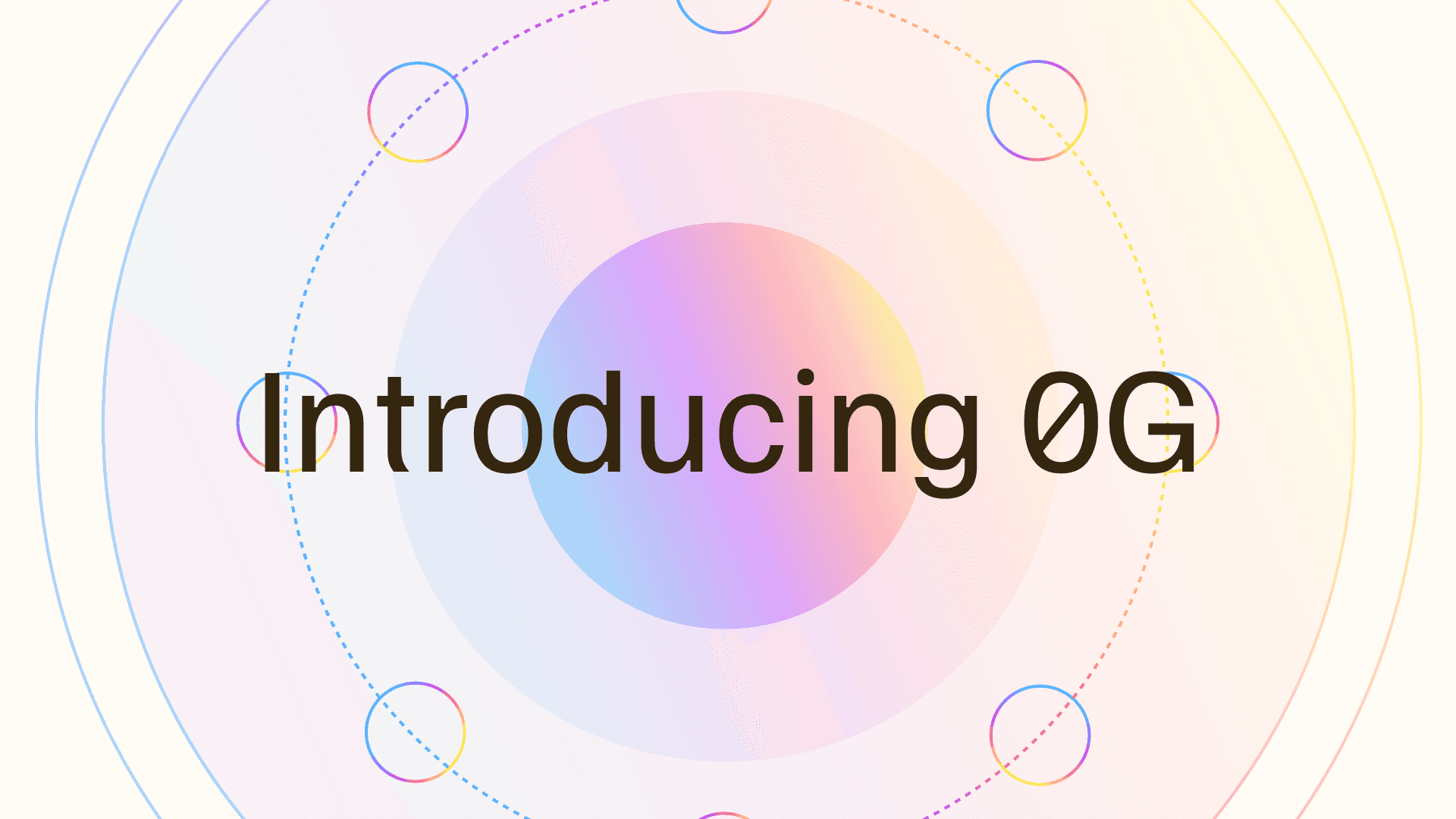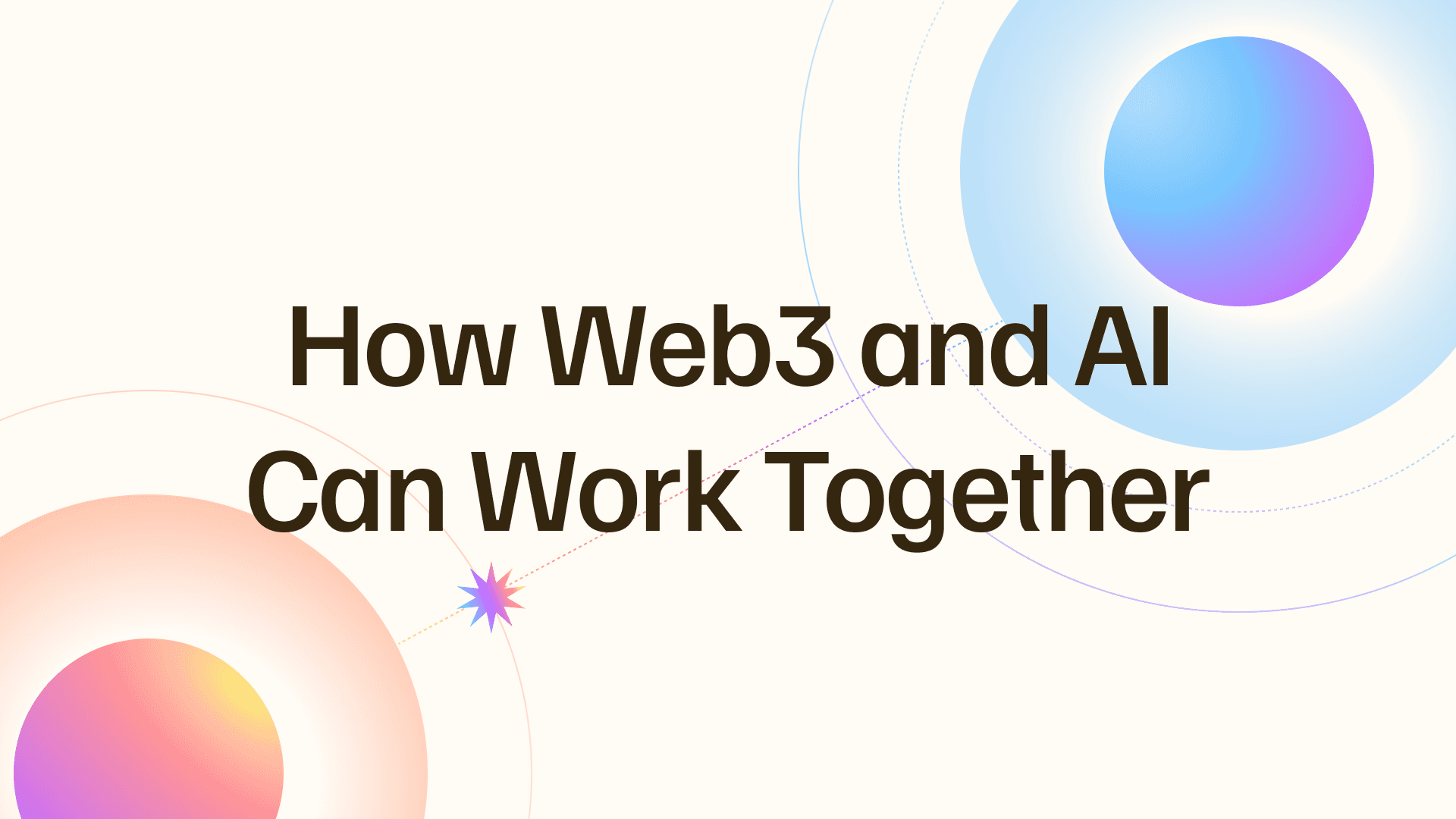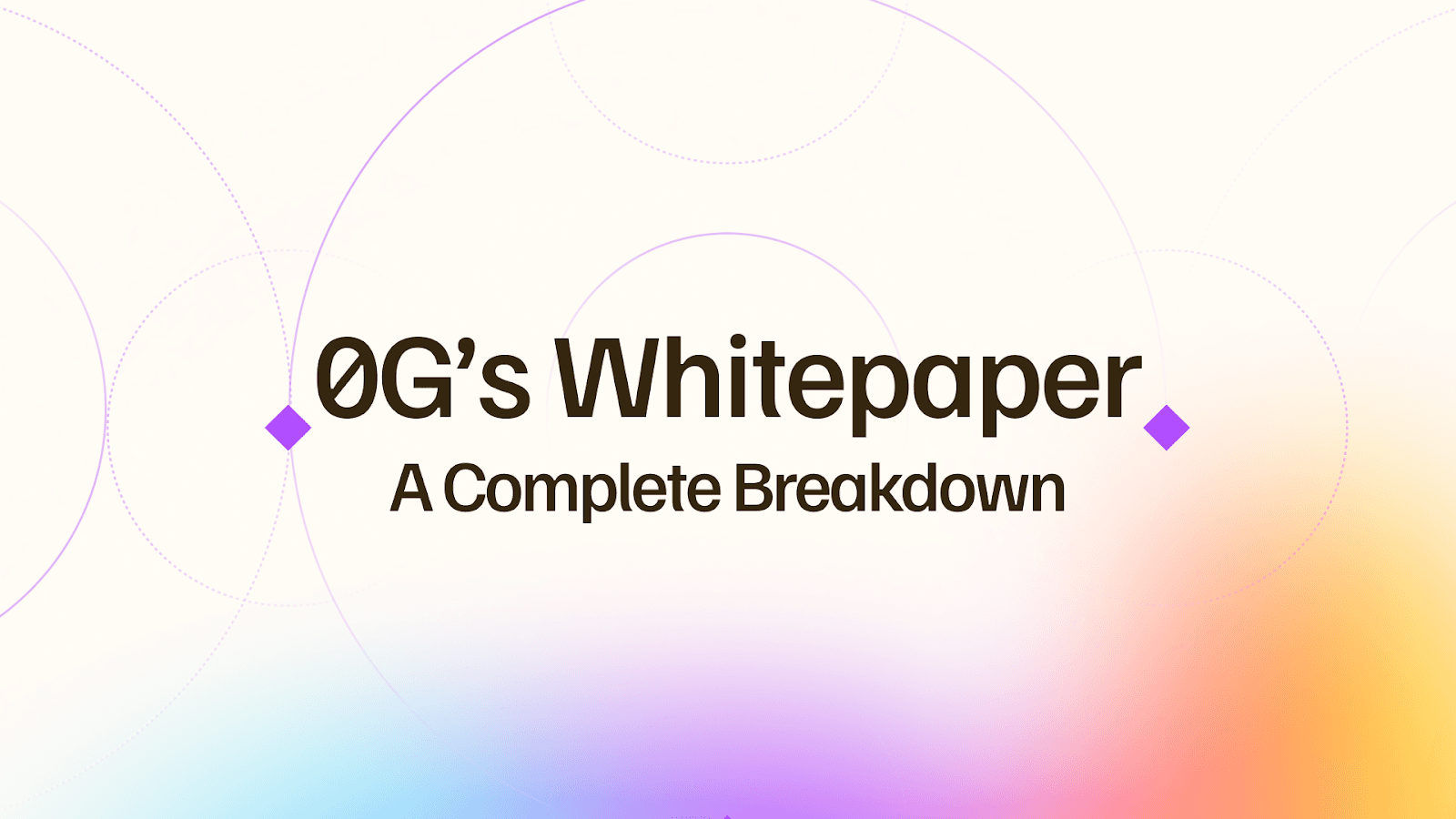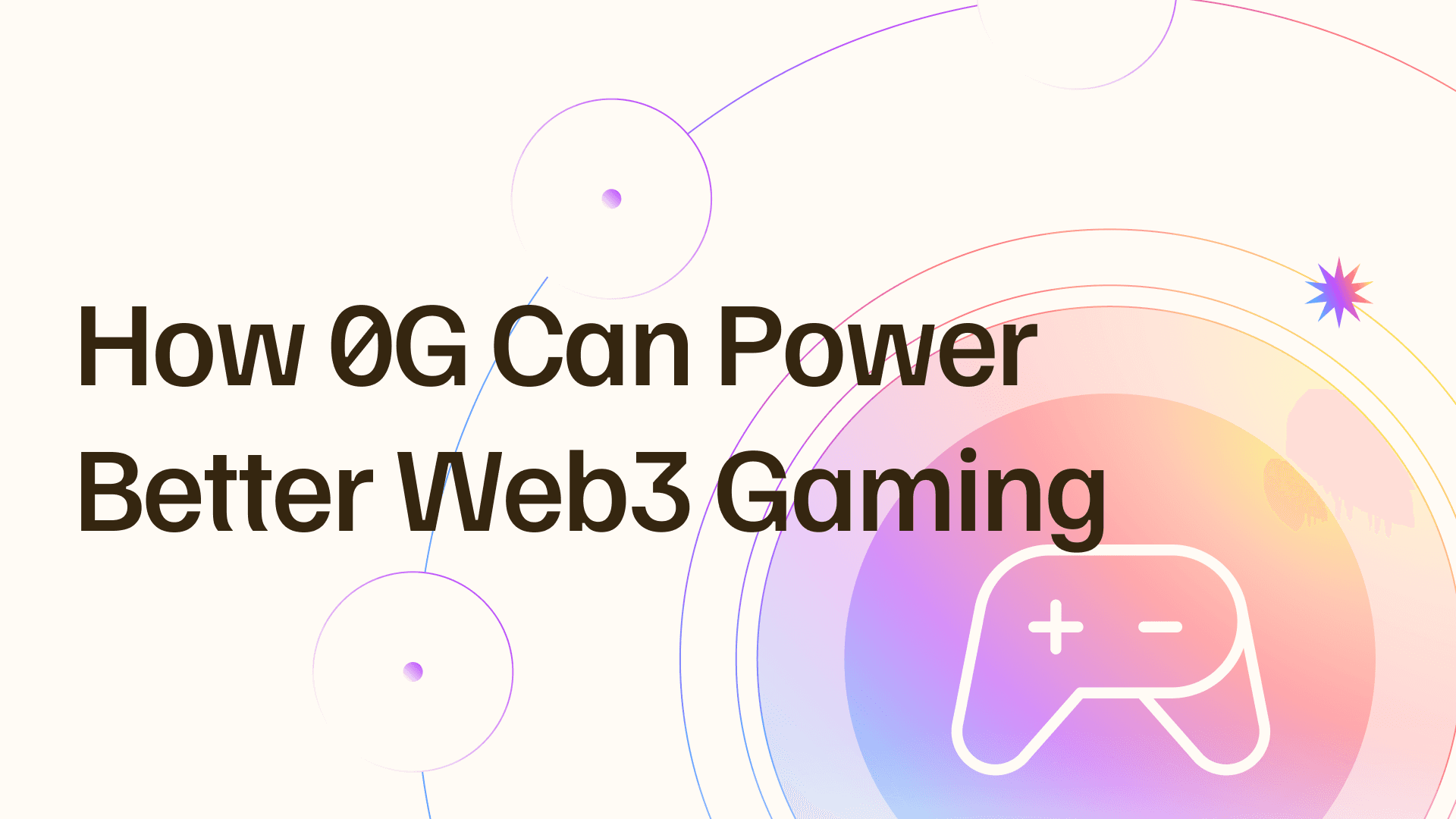
Back

0g
Apr 6, 2024
Introduction
We are pleased to introduce 0G, an infinitely scalable data availability (DA) layer and modular A.I. blockchain.
Existing DA solutions are insufficiently scalable, suffering from efficiency and complexity issues, inadequate incentivization, and an inability to store vast sums of data on-chain in a low-cost, fast-retrieval manner. Our unique architecture provides the DA infrastructure and data storage solutions required to scale blockchain’s reach, bringing a myriad of use cases on-chain, including on-chain A.I., data marketplaces, RWA metadata, and more.
We provide a 1,000x performance improvement over Ethereum’s danksharding and a 4x improvement over Solana’s Firedancer, providing the necessary infrastructure to scale the Web3 on a global scale.
In this article, we will cover:
Limitations of existing DA solutions
0G’s Architecture
Realized improvements
Established partnerships & next steps forward
The State of Data Availability
Ethereum acts as a settlement layer for many types of projects, such as Layer 2s which submit their off-chain transactions to the network. Ethereum also acts as a data availability (DA) layer, keeping data available to network participants who may verify that the data truly exists and was submitted honestly. However, even in light of the recent EIP-4844 launch, Ethereum has congestion issues that have led to high fees for those submitting data, and it is insufficient to scale the immense influx of data arriving on-chain.
Alternative solutions such as Celestia and EigenDA have been introduced, acting as alternative DA layers whereby data can be published more efficiently. They reduce associated DA costs and are seen as complementary to Ethereum’s upcoming danksharding.
That being said, both face significant obstacles:
Celestia: Data must be broadcasted to all consensus nodes (rather than broadcasted selectively) which restricts throughput to 10 MBps. This is extremely insufficient for a proliferation of Layer 2/3 networks and data-heavy use cases such as decentralized A.I. Other issues exist, such as surrounding profitability as a validator and code that may need significant updates moving forward.
EigenDA: While EigenDA incorporates horizontal scalability for improved scalability, many performance bottlenecks exist. For example, validators are restricted and slowed down by the need to both maintain a full Ethereum node and interact with the staking smart contracts on Ethereum. The storage layer is also not adequately designed to support scenarios like decentralized machine learning (e.g. OPML), which require vast amounts of data.
It is very unlikely that these solutions, nor others such as Avail, are adequate to support the exponentially increasing amount of data arriving on-chain. Without a highly scalable, low-cost, and fully programmable DA solution, the industry will be heavily restricted in its ability to bring data on-chain.
This is especially true as the scope of on-chain use cases rapidly expands, including:
Online games (Poker or any other multiplayer game with vast amounts of data)
High-frequency DeFi & on-chain order books
Data marketplaces
Decentralized ID
RWAs (e.g. metadata for land & car titles)
Collaborative documents (Notion, Google Docs, etc.)
High-performance dApps cannot be built on-chain without massively scaling the extent of data that can be stored.
0G: Infinite DA Scalability
0G provides an infinitely scalable and programmable DA layer through data partitioning, as well as through the ability to introduce any arbitrary number of separate consensus networks in a process known as shared staking.
Share staking entails 0G consensus networks being simultaneously managed by the same set of validators, who have staked their assets on a primary network (likely Ethereum). Any slashable event on a network would trigger a slashing on the main network, and this solution can also be integrated with restaking solutions such as EigenLayer.
This design is split into 2 components:
The Storage Network (0G Storage): A general data storage system for structured or unstructured data.
The Data Availability Network (0G DA): A DA layer built on top of 0G Storage. It’s responsible for guaranteeing DA for each data block using Data Availability Sampling (DAS).
Storage Nodes are incentivized to store data via rewards given to those that can successfully answer random queries relating to archived data, acting as a PoW variation known as Proof of Random Access.
In turn, 0G Storage has two separate data lanes:
The Data Storage Lane: For large data transfers.
The Data Publishing Lane: For data availability guarantees. DAS is used, which only requires a small amount of information from each node, and in turn, takes up little network bandwidth.
These lanes connect 0G Storage with a separate consensus network, appearing as follows:
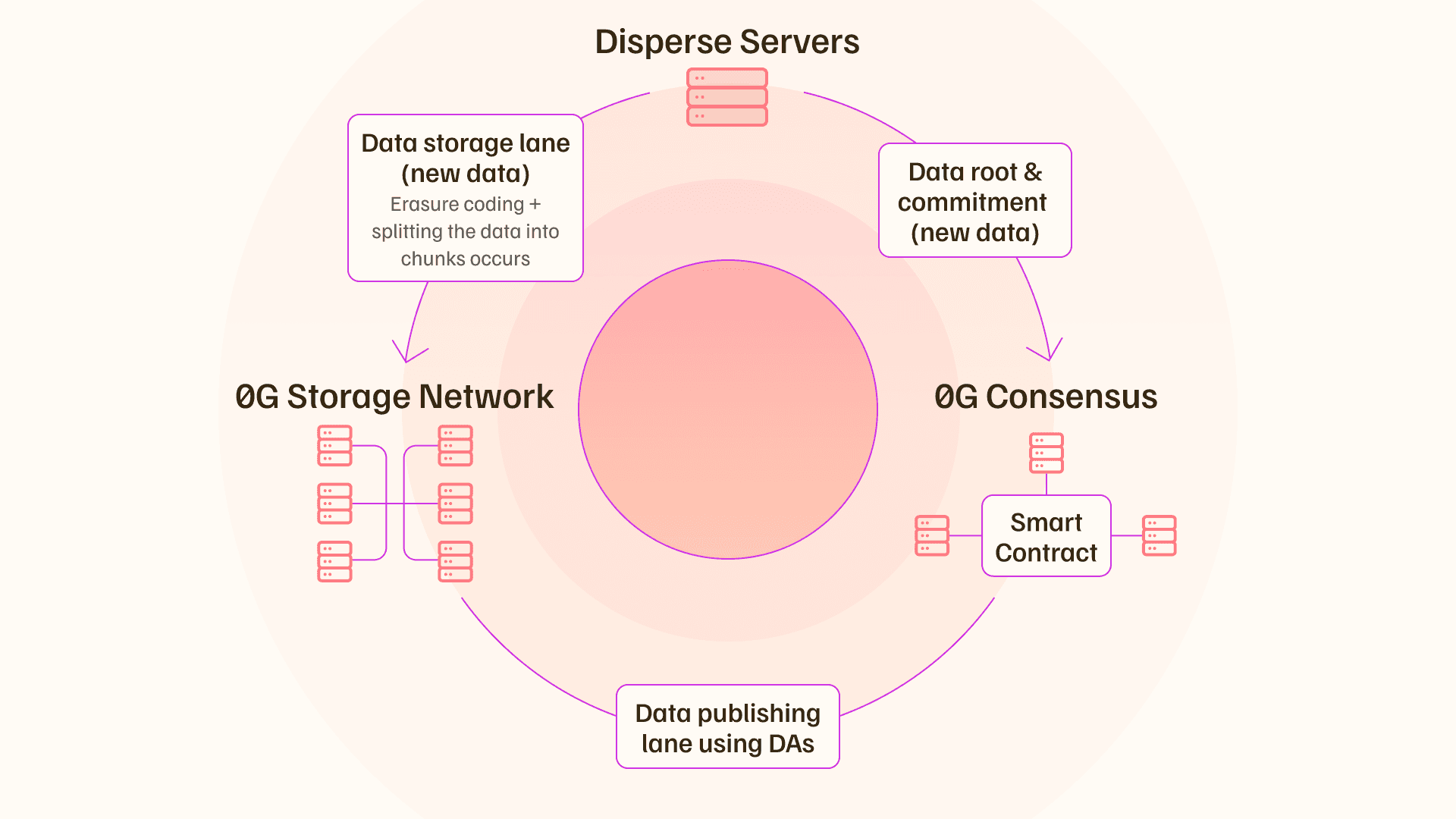
First, data is erasure coded, meaning that it’s fragmented into smaller pieces with redundant elements and distributed across multiple storage locations. This enables fast recovery in the event of any storage node failures. A Merkle tree is then formed with this data and submitted to the consensus layer, recording the order of the data entering the system, and ensuring fast and accurate data retrieval in due course. The chunks of data are then sent to various storage nodes, and DAS is done between validator nodes and storage nodes to ensure DA (via the “data publishing lane” explained above).
The result is that data is stored in the 0G Storage layer, and the 0G Consensus can use DAS to efficiently verify data availability. The graphic illustrates an architecture with only a single consensus network, but this can be horizontally scaled through the addition of additional consensus networks.
These advantages can be summarized as:
Horizontal Scalability: Enabled through partitioned data storage, covered above.
Lane Separation: Separating the data storage lane and the data publishing lane means that the data transfer required for validator synchronization is reduced, avoiding any data broadcast bottlenecks.
Arbitrary Consensus Layers: Each new consensus layer can be used for independent data logs which may serve different DA applications simultaneously.
Reward-Based Mechanisms: Rather than focusing on slashing, emphasis is placed on rewards that encourage a large number of participants.
Erasure Coding: The scheme is carefully tuned for high-efficiency data encoding.
Impact & Partnerships
Our architecture enables data propagation that’s 1,000x faster than Ethereum’s danksharding and 4x faster than Solana’s FireDancer. It is a viable DA solution for any type of project needing DA guarantees or efficient data storage, including Layer 1s & 2s, decentralized shared sequencers, market makers, DeFi protocols, A.I. computing, data marketplaces, bridges, Rollups-as-a-Service (RaaS) providers, and countless more.
Partnerships have already been established with key Layer 1 & 2 players including Polygon, Arbitrum, Fuel, Conflux, Canto, Astar, and Manta, as well as A.I. and ZK partnerships with projects such as ModulusLabs, Magnet A.I., Hyper Oracle, and many more. Polygon is our first major ecosystem integration and will make 0G a DA layer for the Polygon supernet.
Additional top-tier partnerships will be announced in the coming weeks and months.
There is already tremendous demand for our product due to the significant conferred advantages over alternative DA solutions. In particular, our architecture provides major improvements in terms of both performance and programmability.
Performance & Programmability
0G is optimized for on-chain A.I. through the infinite scalability of on-chain DA and storage, to an extent not possible using external blockchain solutions. 0G’s performance provides both high node bandwidth and ultra-low latency, enabling fast, high data transmissions. As mentioned, we estimate 0G to be 1,000x faster than Ethereum’s danksharding and 4x faster than Solana’s FireDancer.
Apart from being highly-performant, 0G is customizable to any need.
Users may choose their storage locations & the degree of data replication. For example, one could pay extra for additional data backups, and elect to use servers in a specific jurisdiction (such as the U.S.). One may even customize data persistence, meaning how long to maintain the system’s stored data.
0G Consensus validators can monitor and communicate with external networks, for needs such as for state offloading (which reduces state bloating), retrieving previously offloaded data (“backfetching”), and more.
There is key-value storage that allows developers to manage and maintain structured data with full mutability, even building database-like applications on top of the 0G storage system.
Team & Funding
0G has extensive credibility on both the technical and business frontiers.
The technical team includes PhD recipients and receivers of gold medals in the Informatics Olympiads, as well as one of the world’s top cryptographers. The team has also both designed and launched Layer 1 Conflux, worked in distributed storage systems at Microsoft Research, and has published award-winning papers at peer-reviewed tech conferences.
The business team has had extensive fundraising and growth success with garten, receiving numerous awards including the top YCombinator project and the top entrepreneur award.
We recently closed our $35M seed round investment, with investors including Hack VC, Bankless Ventures, Symbolic Capital, NGC, and 60+ more.
Next Steps
This is only the beginning.
We are focused on our testnet, developing key partnerships, and community-building.
In future content of ours, we’ll dive further into additional topics, such as:
Our Project Roadmap
The Impact of Decentralized A.I.
0G’s Log System Protocol
0G Incentivization Structures
In the meantime, follow us on Twitter and visit our website at www.0g.ai/ to learn more.
Sign up for our newsletter
